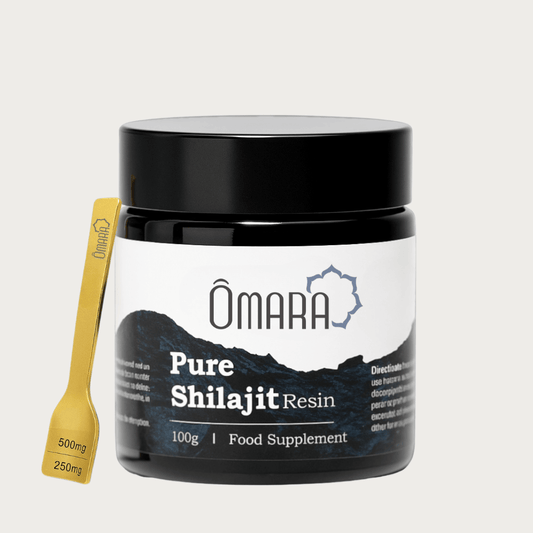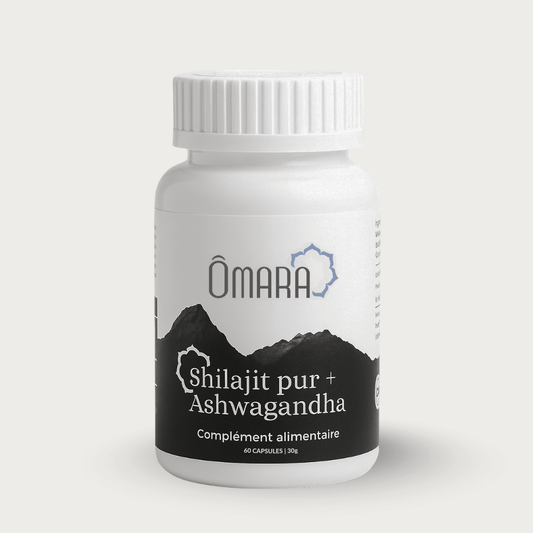
What is Shilajit? Discover the "Mountain Resin" of the Himalayas
Share
Shilajit: The Black Gold of the Himalayas
Introduction
Shilajit , nicknamed "the black gold of the Himalayas," has fascinated practitioners of Ayurvedic medicine for millennia. This unique organomineral substance, which oozes from the rocks of the world's highest mountains, hides secrets that we will explore together.
What is Shilajit?
Shilajit (also called mumijo or mumie) is a natural black to dark brown, viscous resin rich in organic compounds. This extraordinary substance forms in rocky cracks in very high mountains such as the Himalayas, Karakoram, Altai, or the Caucasus.
Natural Formation: The process of creating shilajit spans centuries. It results from the slow decomposition of plant and microbial matter under the high pressure and intense heat of the mountains. In summer, this precious resin naturally oozes from rock cracks, hence its poetic nickname "rock sweat."

The revealing etymology
The Sanskrit term śilājit literally means "conqueror of mountains" or "that which has conquered the rock." This name perfectly captures the symbolic power attributed to this substance in the Ayurvedic tradition.
Shilajit in traditional medicine
Ancient Ayurvedic texts such as the Charaka Samhita and the Sushruta consider shilajit a universal rasayana (rejuvenating tonic). The Charaka Samhita even goes so far as to state that no disease is immune to shilajit when used correctly.
Where does he come from?
Shilajit is a natural substance that comes mainly from the following mountains:
- Himalayan Ranges (India, Nepal, Tibet, Bhutan, Kashmir)
- Caucasus Mountains (Russia, Armenia, Georgia)
- Altai Mountains (Siberia)
- Pamir Mountains (Afghanistan)
- Andes Mountains (Chile - Andean shilajit)
Unique chemical composition
Shilajit derives its exceptional properties from its complex composition:
- Humic acids (60-80% of total, mainly fulvic acid)
- Minerals and trace elements (iron, zinc, copper, selenium)
- Amino acids
- Triterpenes
- Humines
This richness in fulvic acid and minerals explains the properties traditionally attributed to shilajit in Ayurvedic medicine.
Sensory Characteristics of Authentic Shilajit
A quality shilajit can be recognized by:
- Appearance: Sticky resin, uniform dark color
- Odor: Earthy, characteristic (sometimes compared to dried grass)
- Texture: Becomes soft and sticky in heat, hardens in cold
Conclusion
Shilajit represents a fascinating example of the natural richness of mountain ecosystems. This ancient substance, the result of a unique geological process, deserves our attention both for its history and its exceptional characteristics. In our next article, we will explore the different varieties of shilajit and their specificities according to their geographical origin and mineral composition.
Discover our Shilajit Ômara


